A Walk Through Prague's Old Jewish Quarter
For my latest #Wednesdaywalk, I explored Vyšehrad, a significant landmark that played a role in re-establishing Czech national identity. Nevertheless, Prague had always been a cultural melting pot, enriched by diverse influences until WWII and the subsequent handling of its perpetrators, both perceived and real. The post-war division of Europe by the Iron Curtain was just the final nail in the coffin of multicultural Prague. Among the affected minorities were the Jews, who had resided in the Jewish Quarter for a millennium, constituting about 20% of Prague's population before WWII.
In the Middle Ages, the relationship between Christians and Jews was generally strained, exacerbated by formal accusations of Jesus' crucifixion in the early 15th century (see here for further details). Prague sadly experienced several pogroms during the millennium of coexistence between the two religions within its walls. On a positive note, despite the flaws of my ancestors, Prague remained one of the safest places for Jewish people, evolving into the most significant European city for them. The Jewish Quarter, officially known as Josefov, occupies a strip of land on the northern edge of the Old Town, bordered by the Vltava.
Before delving into Josefov, let me highlight two aspects. The openness of Bohemian rulers allowed the Jews to build several large synagogues and foster a vibrant cultural and spiritual life. One notable story is that of Rabbi Loew, or Maharal of Prague, who created the Golem of Prague. If you're unfamiliar with the tale, you can watch this YouTube video engagingly narrating the story. Another significant point is the mass-scale redevelopment of the Jewish Quarter in the early 1900s when all townhouses were demolished. However, some true architectonical gems endured, and I'll guide you through them.
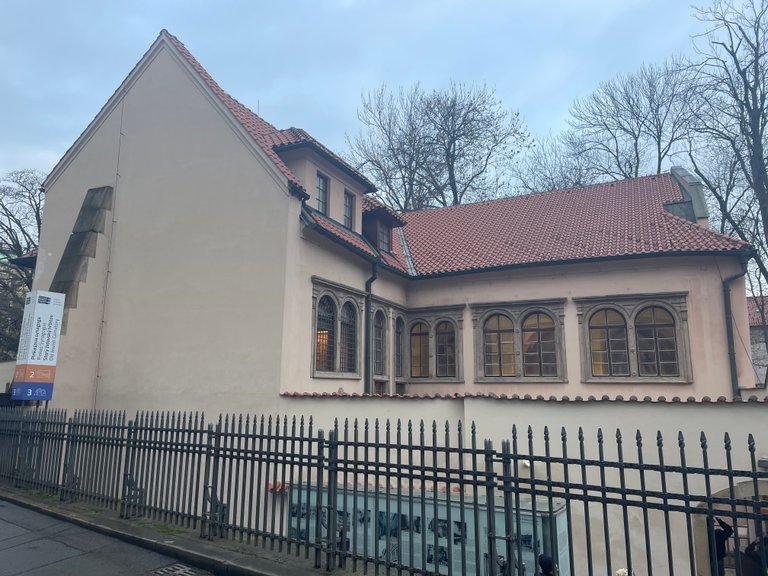
I hurried through my work duties to arrive before sunset, which, during this time of the year, is as early as 4 pm. The synagogues are usually lightened up during the evening, yet I noticed them all darkened recently, likely due to current events in Israel. As a consequence, policemen patrol the area, and the Jewish Museum, overseeing all the historical landmarks in my pictures, has hired a private security agency. While entry into the synagogues is still possible, one must come at least an hour earlier than I did to get a ticket.
Anyway, this is the second oldest synagogue in Prague, The Pinkas Synagogue, dating back to 1535. Initially a private place of worship for one of Prague's most prominent Jewish families, it now houses an exhibition commemorating nearly 80 thousand Czech-Jewish victims of the Holocaust, with all their names listed on the walls.
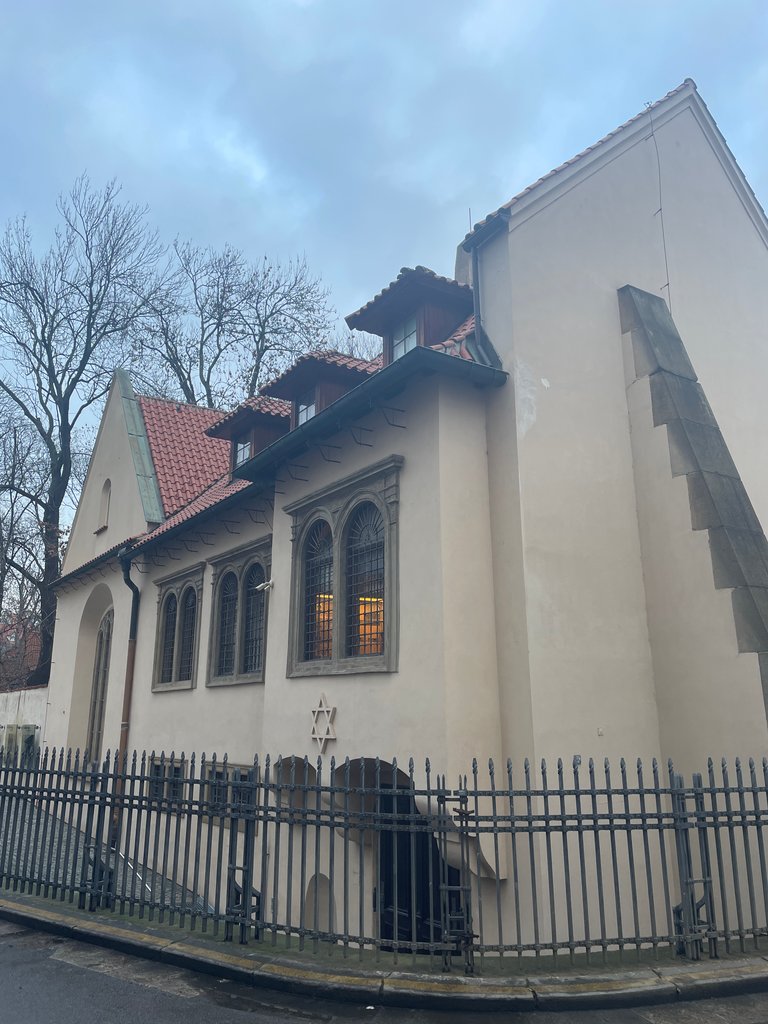
Adjacent to The Pinkas Synagogue is the Old Jewish Cemetery, a historical burial ground serving the local community from 1439 to 1786. It is closed to the public during winter, yet you'll still get a glimpse of it later in my post. The castle-like structure you see is the Ceremonial Hall of the Prague Jewish Burial Society, serving as the entrance to the cemetery - both in the spiritual and physical way. Despite its appearance, it is relatively young, completed only in 1908. However, it replaced an older building that served the same purpose.
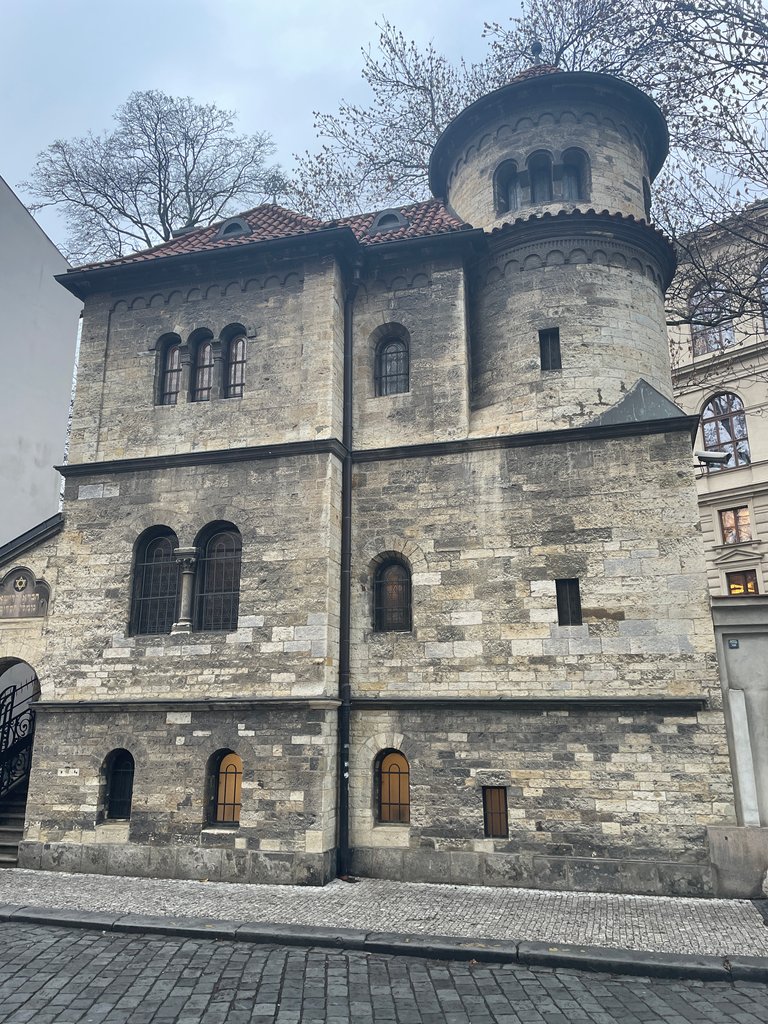
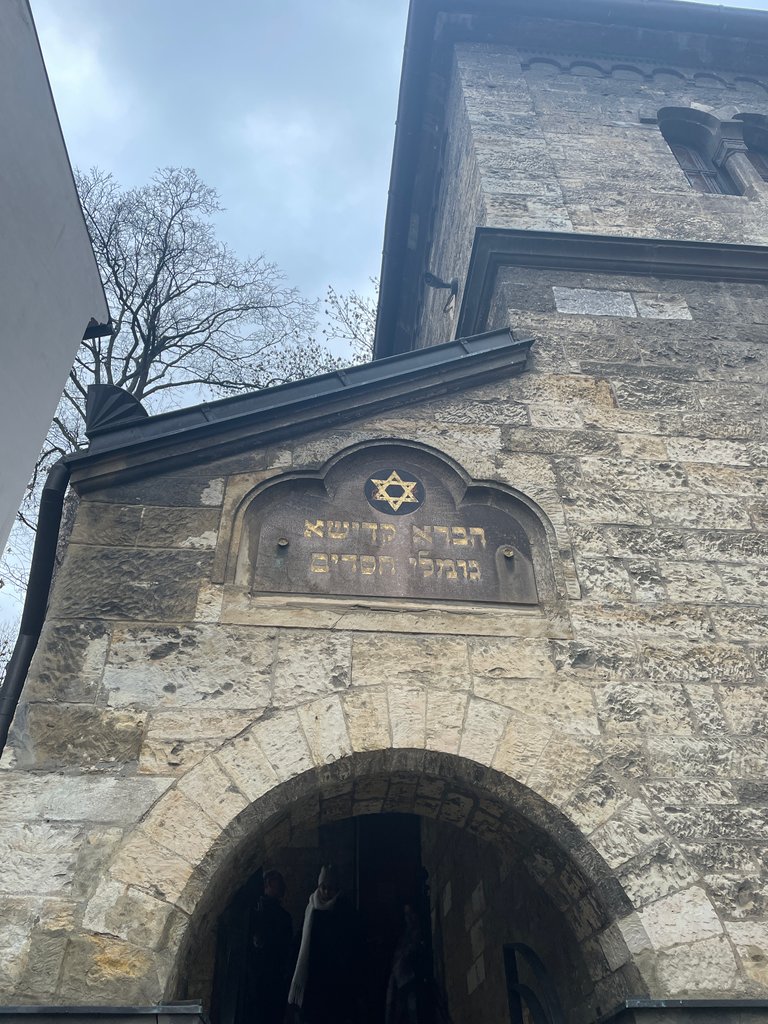
The largest and only Early-Baroque synagogue in the district is the Klausen Synagogue from 1694. It's quite difficult to capture it properly. Inside, you'll find an exhibition dedicated to the fundamentals of the Jewish faith and describing the customs associated with its holidays.
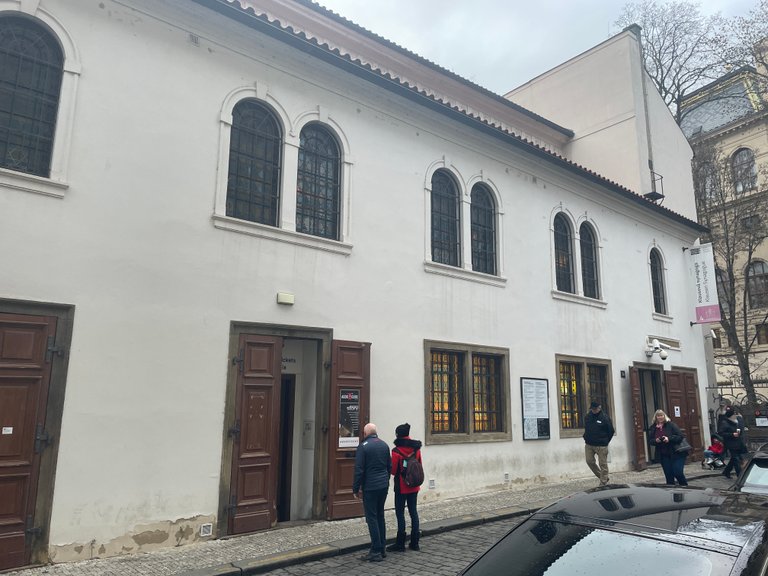
The marketplace with those tiny stalls by the Klausen Synagogue boasts a tradition that spans centuries. Although today it's filled with crappy souvenirs, there is still one thing worth mentioning...
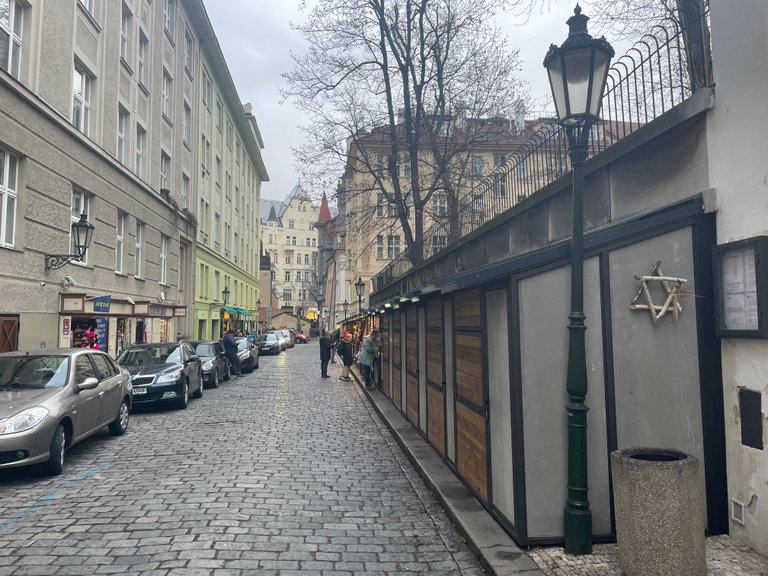
You can spot the cemetery above it. Yes, it's above it. This cemetery has several stories, some suggesting as many as seven in the deepest sections. In contrast to other religions, Judaism, or at least its Prague congregations, prohibits the reuse of burial spots. Once interred, bodies cannot be separated from the soil above their coffins. Yet, given the cemetery's limited capacity, a creative solution emerged. The soil was gradually piled up, covering layer upon layer of coffins until it reached a height somewhere between the first and second floors of the surrounding buildings.
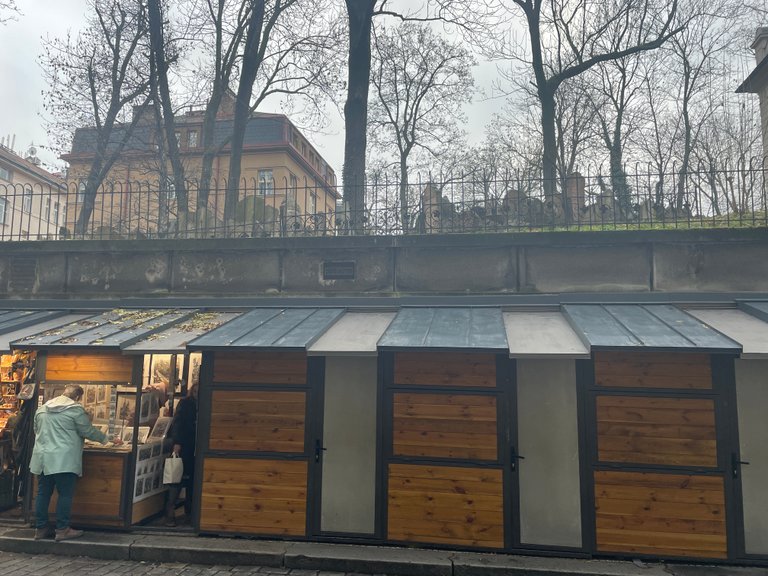
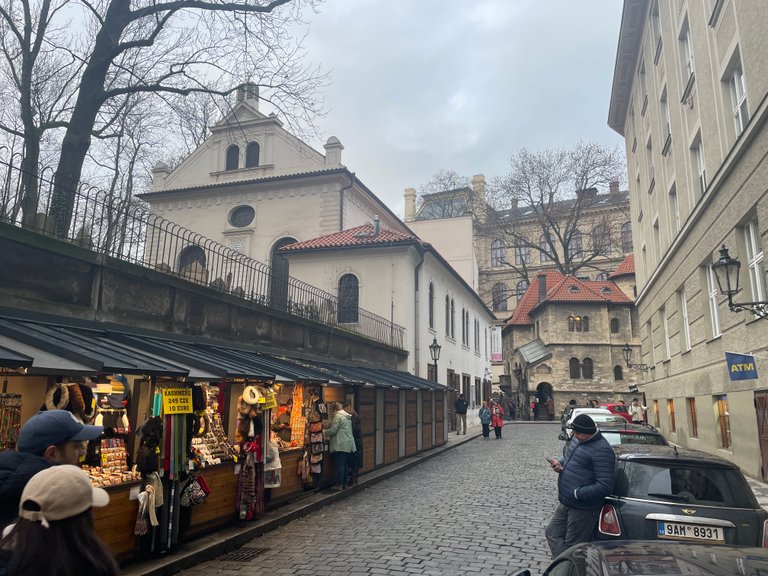
I hope you're familiar with the Golem story by now. Here's the setting for it—the Old New Synagogue. This Gothic masterpiece and one of the oldest synagogues worldwide, dating back to 1270, is steeped in legends, including the famous one with the Golem. After pulling out Golem's Shem, Rabbi Loew supposedly stored the inanimate body of his creature in the synagogue attic. According to legend, the clay has long since dissolved into dust. Another tale says that angels assisted in its construction, bringing stones from the original Temple in Jerusalem. The belief goes that these angels will return when the stones are needed back in Jerusalem.
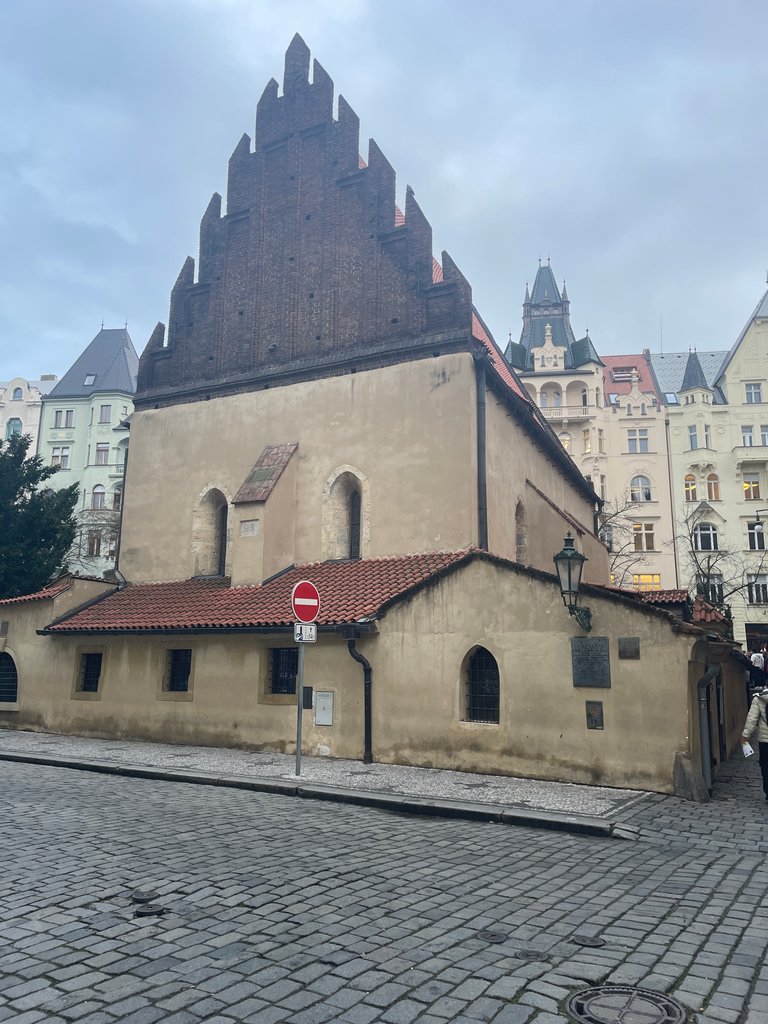
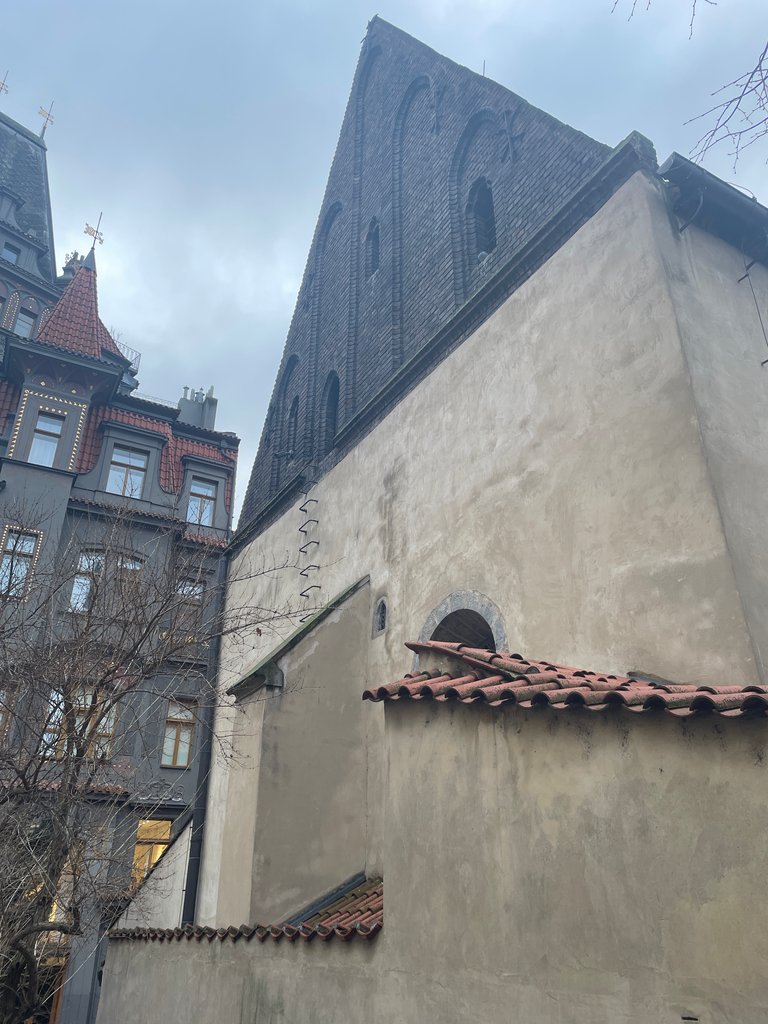
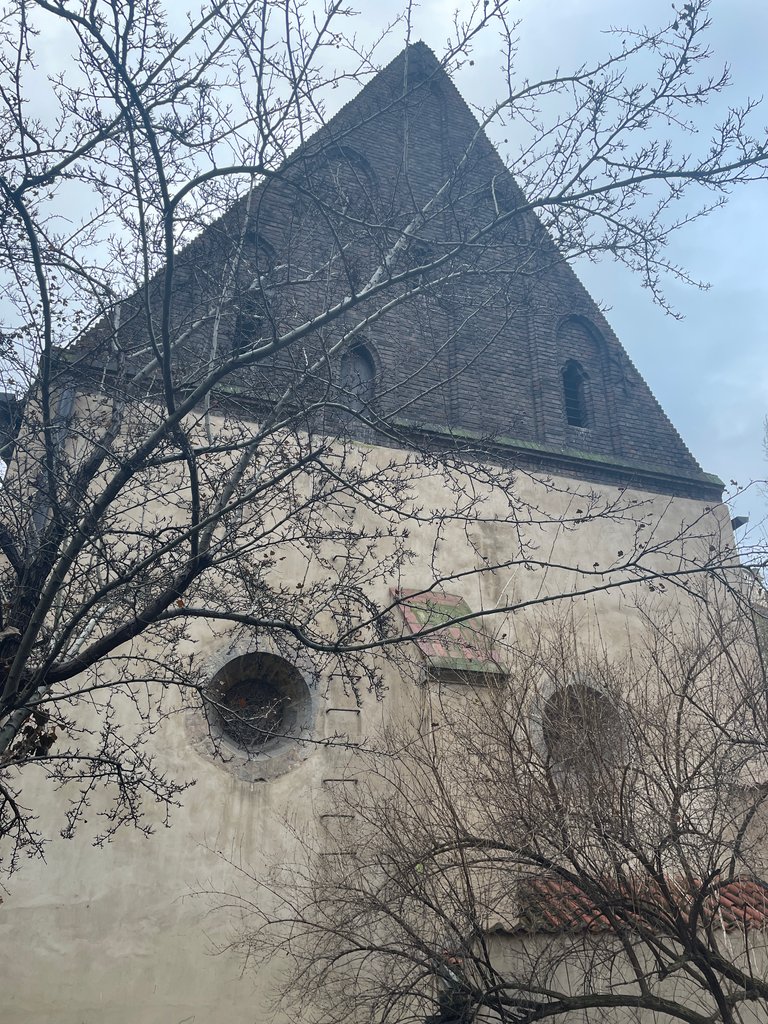

Just across the narrow street in the photos is the High Synagogue, built in 1577, and the Jewish Town Hall. While the synagogue isn't open to the public, you can find an information center and a ticket office in its portal. I asked about the Golem and learned that the synagogue's attic now houses nothing more mystical than AC units that ensure the Old Synagogue's survival into the next century. You can’t see much from the High Synagogue except for its walls.
The Jewish Town Hall has undergone numerous reconstructions over the centuries, with the most significant occurring in 1689 and 1754. The building remains under the ownership of the Jewish community and is the seat of the Chief Rabbi of Bohemia. An interesting trivia: while the clock on the tower features Arabic numerals, the smaller clock above the wall is decorated with Hebrew ones.

The Maisel Synagogue is particularly striking when illuminated. Its monumental appearance and rich decorations suggest that it was constructed during the so-called Golden Era of the Prague Jews, under the rule of Rudolf II, Holy Roman Emperor. Rudolf II was fascinated by occult sciences, including Kabbalah and Jewish mysticism. It was the emperor himself who donated the real estate for the synagogue's construction which began in 1590.

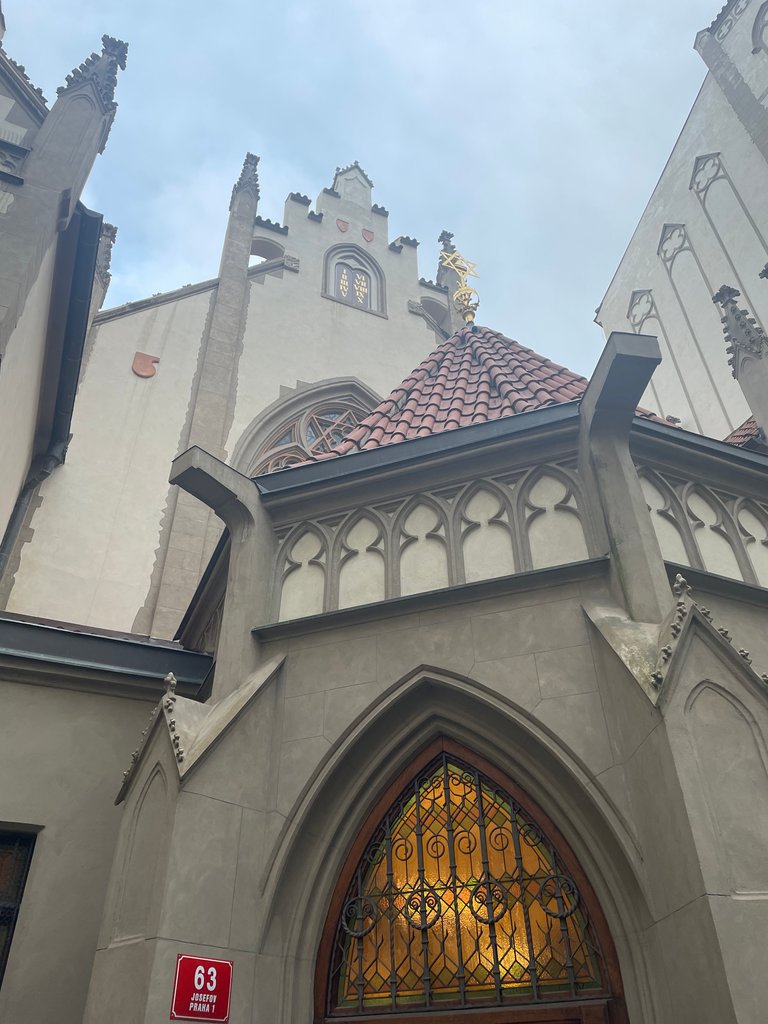
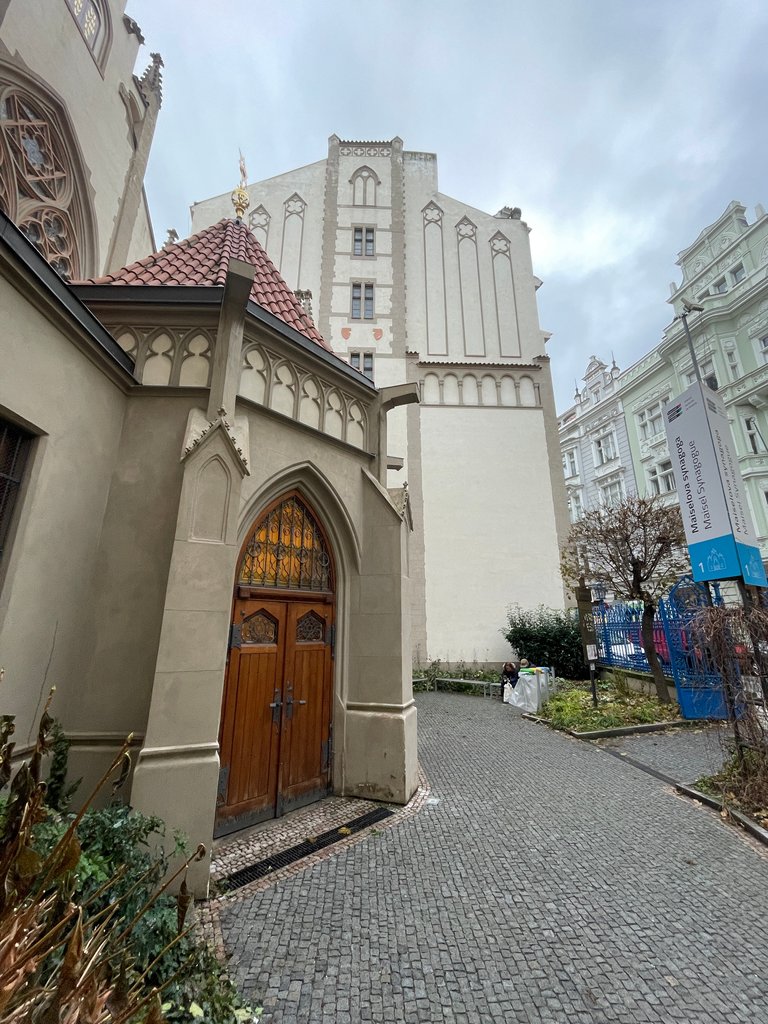
While all those synagogues are within proximity, the last one is about 300 meters away. Along the way, you might notice some interesting sights, such as upscale kosher restaurants or the Jewish school. The memorial plaque on the school building explains things better than I ever could.

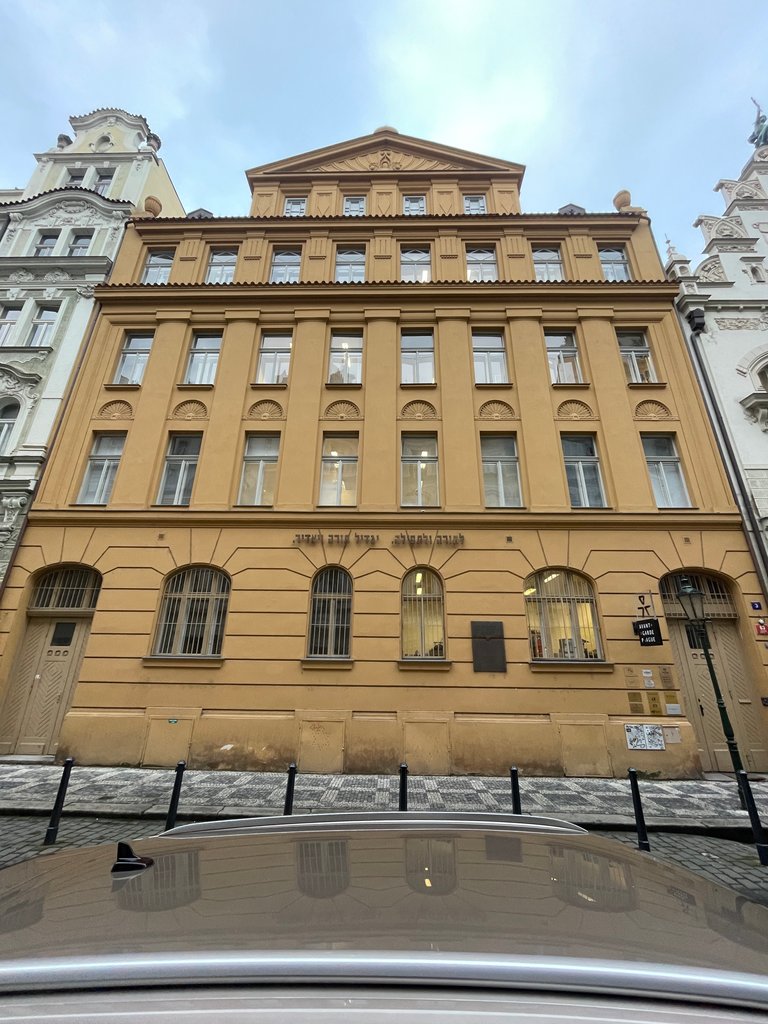
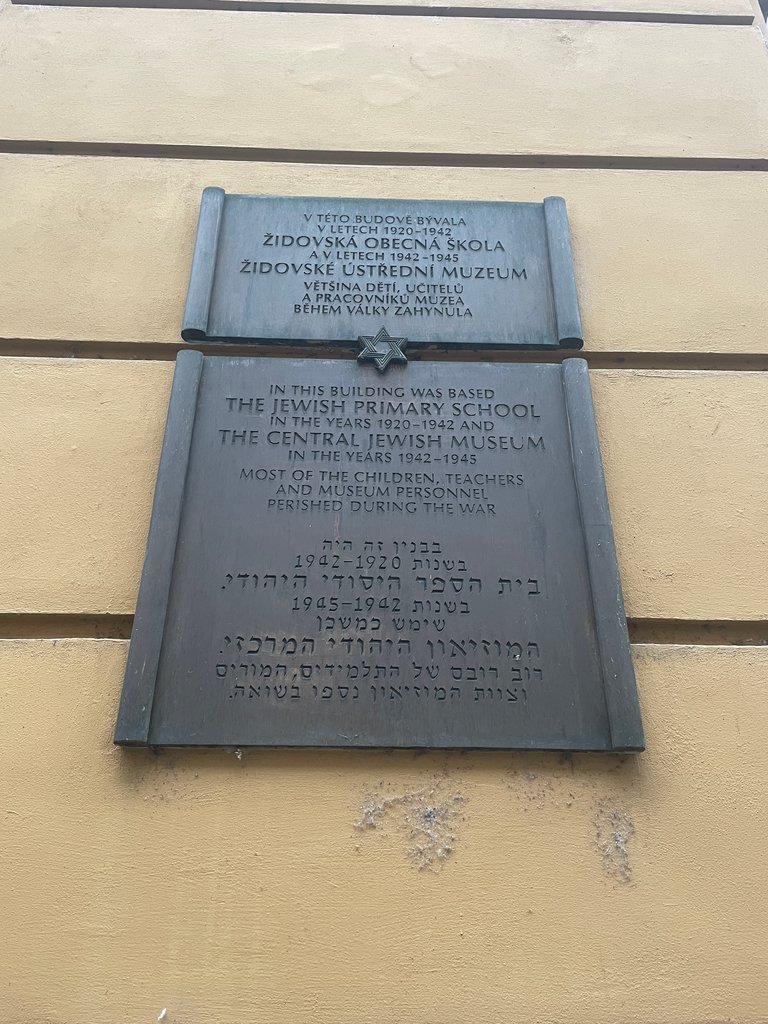
Speaking of those who perished, such Stolpersteine are scattered everywhere in this quarter, to commemorate their lives.

In front of the Spanish Synagogue, the newest one in the old Jewish Quarter stands a statue of Franz Kafka. A quick side note about Kafka – he's a literary figure claimed by at least three nations. However, none are entirely correct. Kafka, of Jewish origin, considered German his mother tongue and spent his entire life in Bohemia. His proficiency in Yiddish and Hebrew was limited, he didn't feel comfortable with Czech, and his German sounded peculiar to native German speakers. This perk of his written German added a lot to his work, though. The statue of Kafka is from 2003.
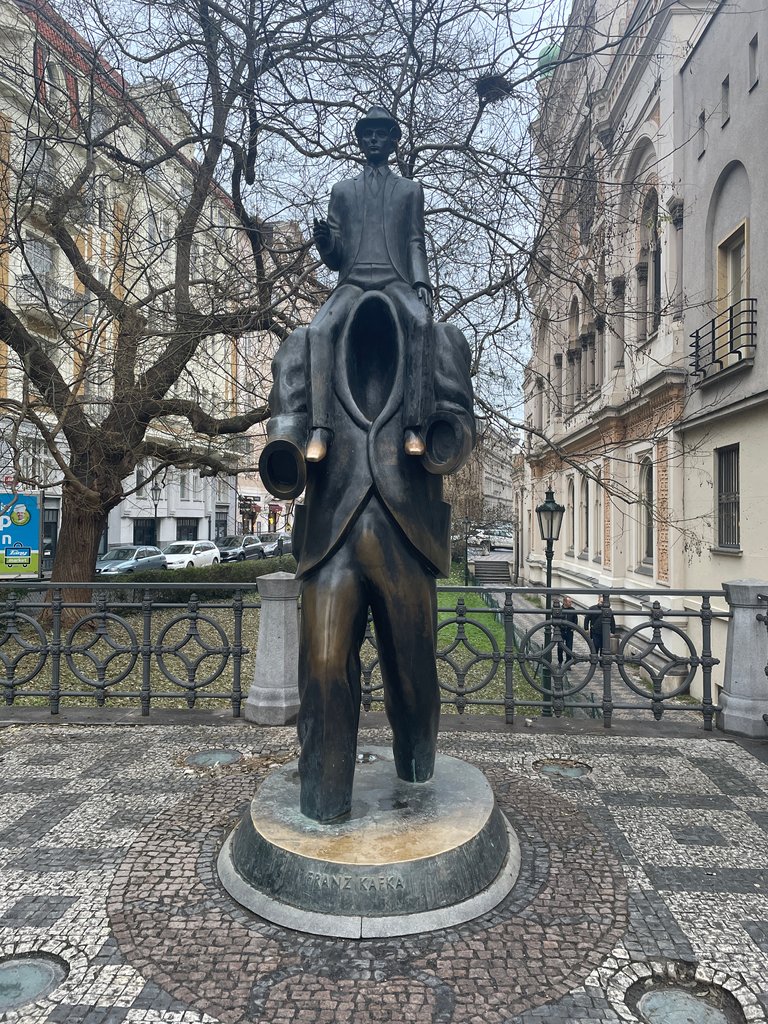
In contrast to the other synagogues, which align with the architectural style prevalent in Prague during their respective eras, the Spanish Synagogue, built in 1868, stands out with its Moorish Revival Style, from which it derives its name. Placed at the edge of the old Jewish Quarter, it neighbors the Church of the Holy Spirit. The area has not witnessed significant religious clashes anymore, as Jews in Bohemia have enjoyed equal civil rights to those of Christian beliefs since 1781.
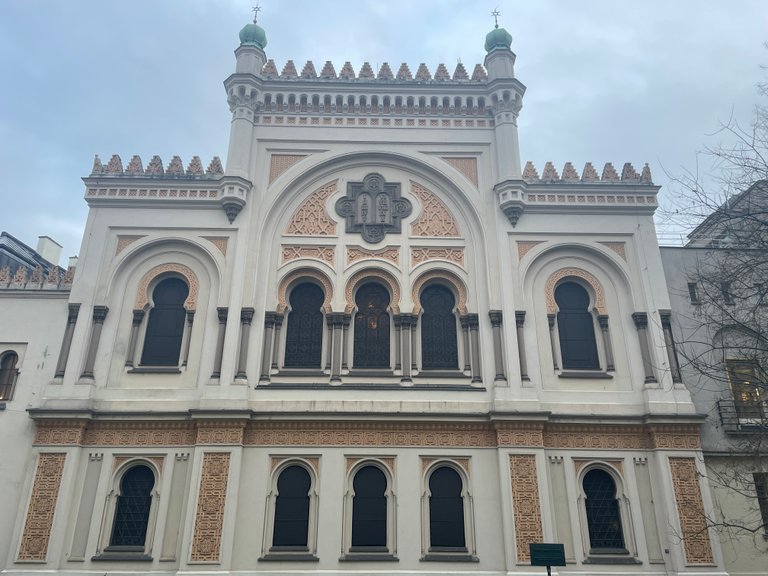
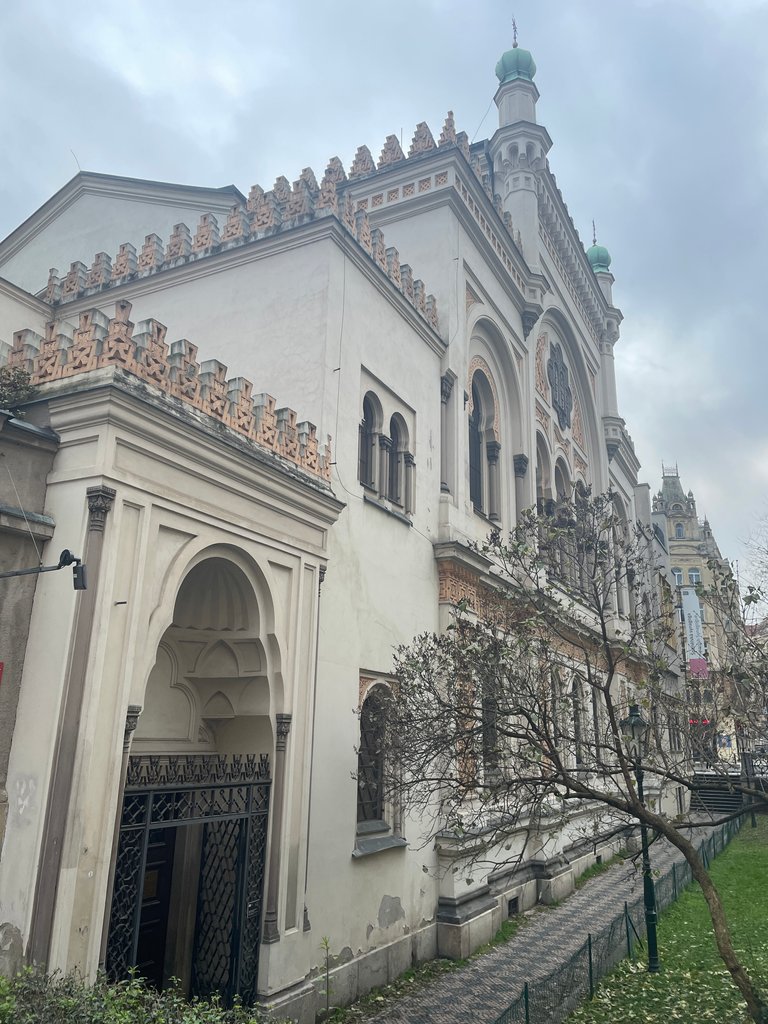
So much for my #wednesdaywalk! I hope you enjoyed it as much as I did. Feel free to join this initiative invented and promoted by @tattoodjay.
Congratulations, your post has been added to Pinmapple! 🎉🥳🍍
Did you know you have your own profile map?
And every post has their own map too!
Want to have your post on the map too?
"Když nevíš kam s poslední denní dávkou Tipáků, odlož si je k Fishovi, tam se neztratí."
Tak jo :)
(bez mučení přiznávám, že jsem text nečetl, ale známe své lidi a víme, kde si takové věci můžeme dovolit)
@tipu curate 4
Upvoted 👌 (Mana: 0/56) Liquid rewards.
Haha, tak to děkuju za projevenou důvěru :) Snažil jsem se, aby to stálo za to. Třeba si k tomu ještě najdeš cestu, až tě přepadne nespavost :)
I remember when I was in Prague, next to the synagogue, when I took a picture of the interior of the cemetery through the opening in the fence, I have never seen monuments piled up like that anywhere in my life. I need to find those photos from Prague and make a couple of posts😀
You definitely should ;)
Thanks :)
You are welcome man :)
Yay! 🤗
Your content has been boosted with Ecency Points, by @godfish.
Use Ecency daily to boost your growth on platform!
Support Ecency
Vote for new Proposal
Delegate HP and earn more
a great post such an interestign walk and very informative with all the info you provided
Thanks for joining the Wednesday Walk :)
I am glad you liked it :)
Hiya, @ybanezkim26 here, just swinging by to let you know that this post made it into our Honorable Mentions in Travel Digest #2088.
Your post has been manually curated by the @pinmapple team. If you like what we're doing, please drop by to check out all the rest of today's great posts and consider supporting other authors like yourself and us so we can keep the project going!
Become part of our travel community:
Well, you rushed through your job duties to do this one in such detail. I learn so many things from your posts. Thanks, it's a wonderful walk, full of history and interesting facts. 😍
I'm glad you liked it :)
The maps of such old buildings are very beautiful and strong and by visiting such places one's knowledge increases a lot and one gets to learn many old and many new things that are coming. A lot of things happen in our life in time.
So beautiful city. Love the photos.
Thanks for sharing.
I am glad you liked it :)